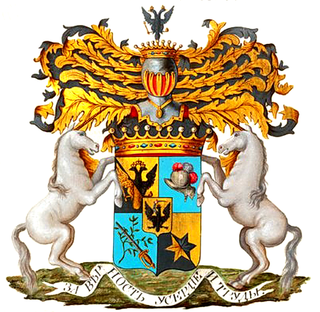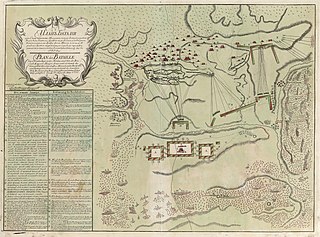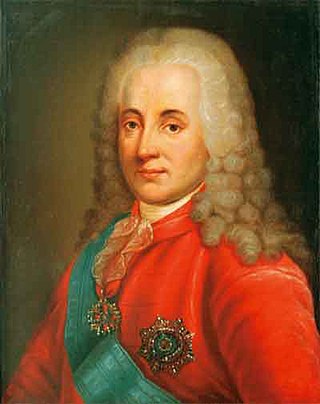Events
| | This section needs expansion. You can help by adding to it. (October 2015) |
| Years in Russia: | 1733 1734 1735 1736 1737 1738 1739 |
| Centuries: | 17th century · 18th century · 19th century |
| Decades: | 1700s 1710s 1720s 1730s 1740s 1750s 1760s |
| Years: | 1733 1734 1735 1736 1737 1738 1739 |
Events from the year 1736 in Russia
| | This section needs expansion. You can help by adding to it. (October 2015) |
| | This section needs expansion. You can help by adding to it. (October 2015) |
| | This section needs expansion. You can help by adding to it. (October 2015) |

Anna Ioannovna, also russified as Anna Ivanovna and sometimes anglicized as Anne, served as regent of the duchy of Courland from 1711 until 1730 and then ruled as Empress of Russia from 1730 to 1740. Much of her administration was defined or heavily influenced by actions set in motion by her uncle, Peter the Great, such as the lavish building projects in St. Petersburg, funding the Russian Academy of Science, and measures which generally favored the nobility, such as the repeal of a primogeniture law in 1730. In the West, Anna's reign was traditionally viewed as a continuation of the transition from the old Muscovy ways to the European court envisioned by Peter the Great. Within Russia, Anna's reign is often referred to as a "dark era".

Anna Pavlovna of Russia was Queen of the Netherlands by marriage to King William II of the Netherlands. She was a Russian patriot who upheld a strict royal etiquette in the Netherlands, where she never felt at home, and identified more as an Imperial Russian grand duchess than a Dutch queen. She had no political influence, but was active within charity.

Augustus III was King of Poland and Grand Duke of Lithuania from 1733 until 1763, as well as Elector of Saxony in the Holy Roman Empire where he was known as Frederick Augustus II.

The House of Saltykov is the name of an old Russian noble family which can trace their ancestry back to 1240. In March 1730 the family was awarded with the title of Count in Russia, granted to them by Empress Anna of Russia.

The Battle of Stavuchany was a battle between the Russian and Ottoman armies, which took place on August 17(28) of 1739 during the Russo-Turkish War of 1735-1739.

Saint Anna German High School, usually known as Annenschule, was a school in Saint Petersburg, Russia founded in 1736 for children of the German population of the city. In 1918, Annenschule became Soviet work school №11, and later school №203. Its alumni included ethnologist Nicholai Miklukho-Maklai, jeweler Peter Fabergé, philologist Faddei Zielinski, teacher and physician Peter Lesgaft, poet and Nobel Prize laureate Joseph Brodsky, actress Elena Granovsky, writer Igor Yefimov, and chess world championship pretendent Victor Korchnoi. In 1975 the specialized high school №239 moved into the building.

Joanna Elisabeth of Holstein-Gottorp was a member of the German House of Holstein-Gottorp, a princess consort of Anhalt-Zerbst by marriage, and the regent of Anhalt-Zerbst from 1747 to 1752 on behalf of her minor son, Frederick Augustus. She is best known as the mother of Empress Catherine the Great of Russia.

The Rothschild egg is a jewelled, enameled, decorated egg that was made under the supervision of the Russian jeweller Peter Carl Fabergé by the workshop of Michael Perchin in 1902. Béatrice Ephrussi de Rothschild presented this egg to Germaine Halphen upon her engagement to Béatrice's younger brother, Édouard Alphonse James de Rothschild.
'Ali-Mirza, born Alexander (ალექსანდრე), was a prince of the Georgian Bagrationi dynasty of the Kingdom of Kakheti who ruled in eastern Georgian provinces – Kartli and Kakheti – for the shah of Iran in the late 1730s. Like his father, King David II, and brothers, Ali-Mirza was a convert to Islam. As a ruler of Kakheti, he is sometimes known in modern historiography by his Christian name Alexander and ascribed the regnal number "Third". Despite his power being derived from the shah, Ali Mirza followed the established Georgian tradition to style himself as "king of kings".

Prince Dmitry Mikhailovich Golitsyn was a Russian aristocrat of the Golitsyn family. A cousin of Prince Vasily Vasilyevich Golitsyn, he was noted for his noble attempt to turn Russia into a constitutional monarchy.

Events from the year 1739 in Russia

Events from the year 1735 in Russia
Events from the year 1732 in Russia

Events from the year 1730 in Russia
Events from the year 1740 in Russia
Events from the year 1731 in Russia

The Cabinet of Ministers was the supreme state body established on November 4, 1731 by the decree of Empress Anna Ioannovna. On December 23, 1741, after the accession of Elizabeth Petrovna, it lost its powers and was transformed into the Personal Office of the Empress. In 1756, its functions were transferred to the Conference at the Highest Court.

Prince Alexander Borisovich Kurakin was a statesman and diplomat from the Kurakin family: an Active Privy Councillor, the Ober-Stallmeister (1736), a senator.
Events from the year 1742 in Russia

Annenhof was the name of two separate imperial palaces in Moscow in Russia, known as the Annenhof Winter Palace and Annenhof Summer Palace, both of them designed by Bartolomeo Rastrelli and built in 1730–1731 on the order of Empress Anna of Russia. They served as the residence of Anna and her court, as Anna preferred Moscow to Saint Petersburg.
![]() Media related to 1736 in Russia at Wikimedia Commons
Media related to 1736 in Russia at Wikimedia Commons